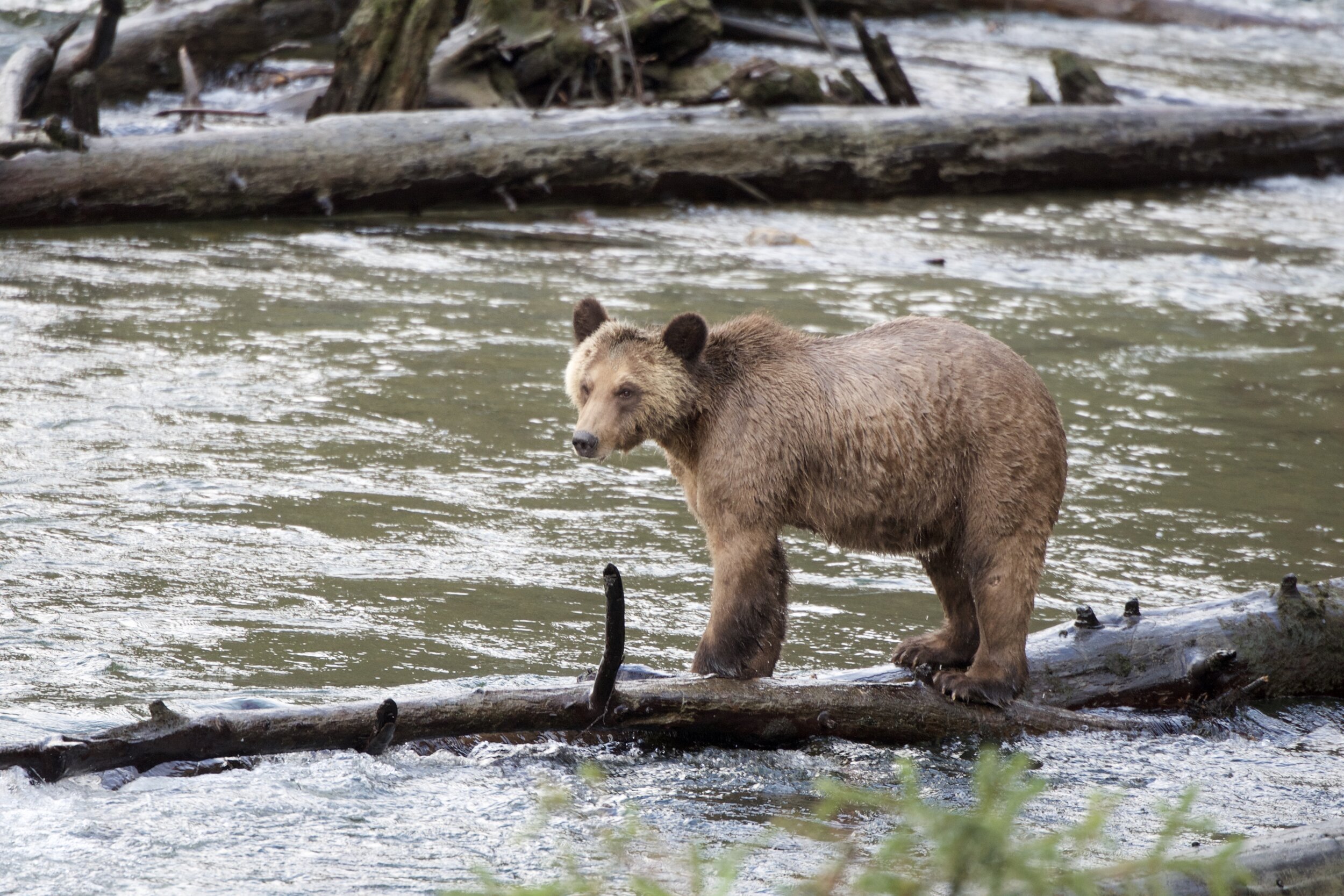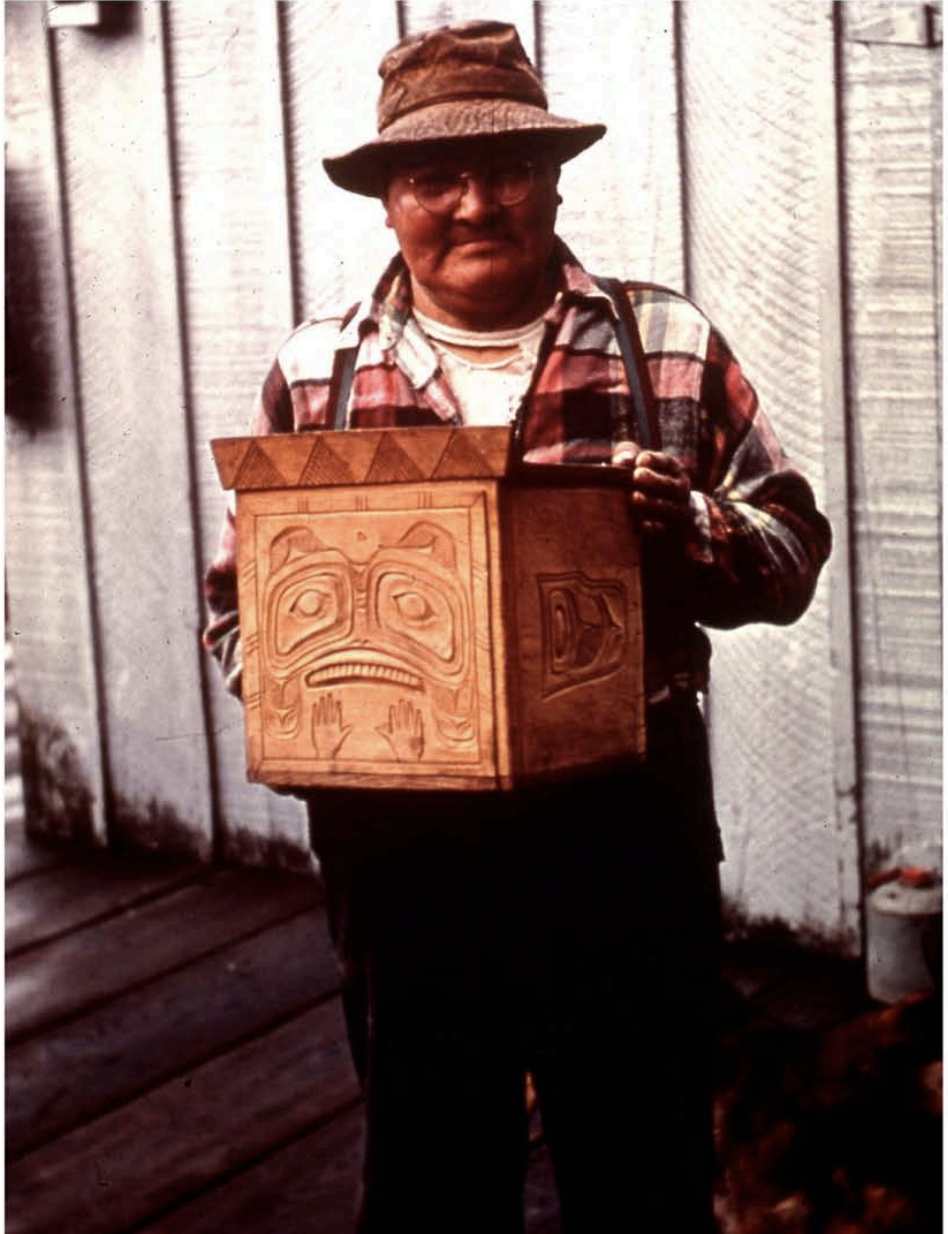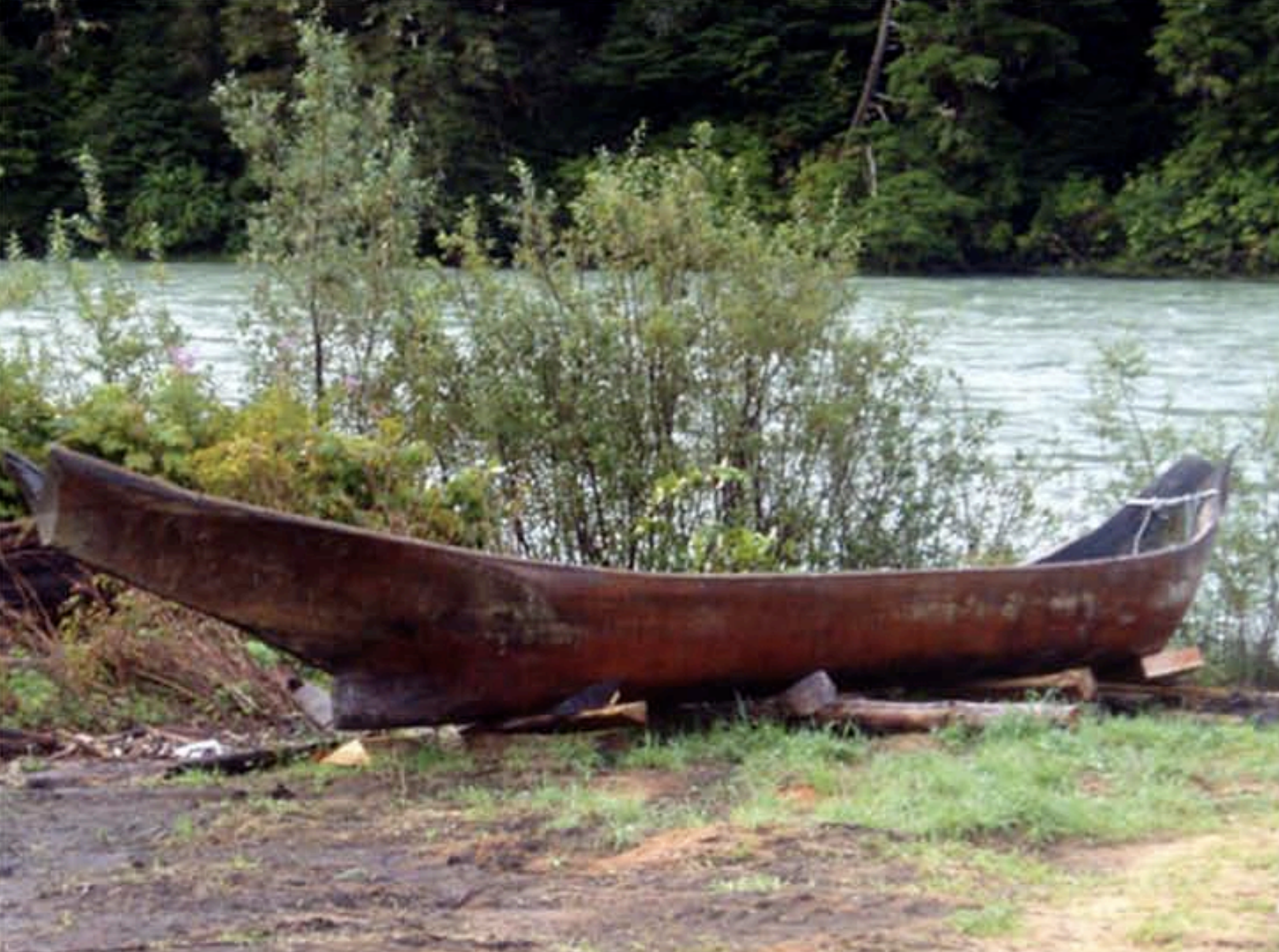
Enrich your spirit
Experience Authentic W’ui’kinuxv Culture
The W’ui’kinuxv hold a deep respect for wildlife and the environment. Traditional protocols are guided by the sùya’aima (“things one can reach for”). As our guest you may be offered the unique opportunity to experience ceremonies in the House of Nuùw̓aqawa including dancing, feasting, singing, storytelling, smudging, healing, sharing circles and cleansing. Other activities might include fishing, harvesting, observing carvers and site seeing. Guests of H’aiagal’ath Grizzly Bear Tours will be personally contributing to Indigenous reconciliation by supporting W’ui’kinuxv through a cultural revitalization process.
Story of the Logo
Our logo embodies H’aiagal’ath’s sacred connection to W'ui’kinuxv land and resources. Two Grizzly Bears hold copper and a salmon. This image is immersed in a green background represents the rich forested lands and the interconnectedness of humans, wildlife, waterways and lands within W’ui’kinuxv Territory. Grizzlies are keepers of the land and share the responsibility of stewardship with W’ui’kinuxv citizens. The salmon represents the abundance of resources and the delicate balance that must be maintained to ensure that life is sustained. The copper (t̓hàqva) is a means of expressing wealth. Individual names of W’ui’kinuxv demonstrate the sacred connection to the land and resources. They give us the power and authority to carry on our sacred ceremonies that uplift ourselves, our families, our clans and the W’ui’kinuxv while we maintain sustainable stewardship of our land, water, resources and all life in the Territory.
W’ui’kinuxv Artist: Danny Coon, 2020








